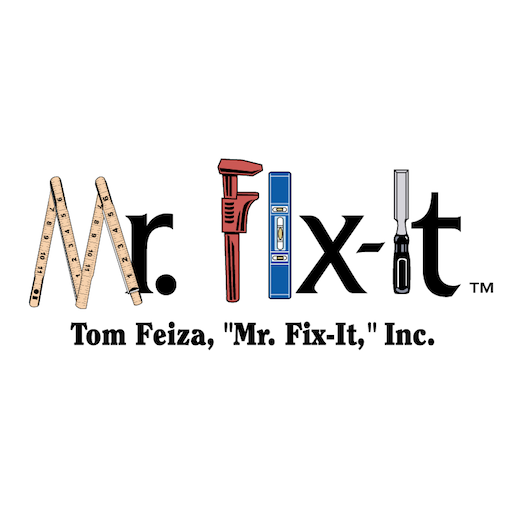By Tom Feiza, Mr. Fix-It, Inc., HowToOperateYourHome.com

Central air conditioning often keeps the upper floor much warmer than the first floor. Why does this happen, and what can you do about it during your inspection?
Hot upper level in a modern home
Modern forced air systems provide heating and air conditioning (Illustration A029C). These systems include properly designed and installed supply and return ducts.
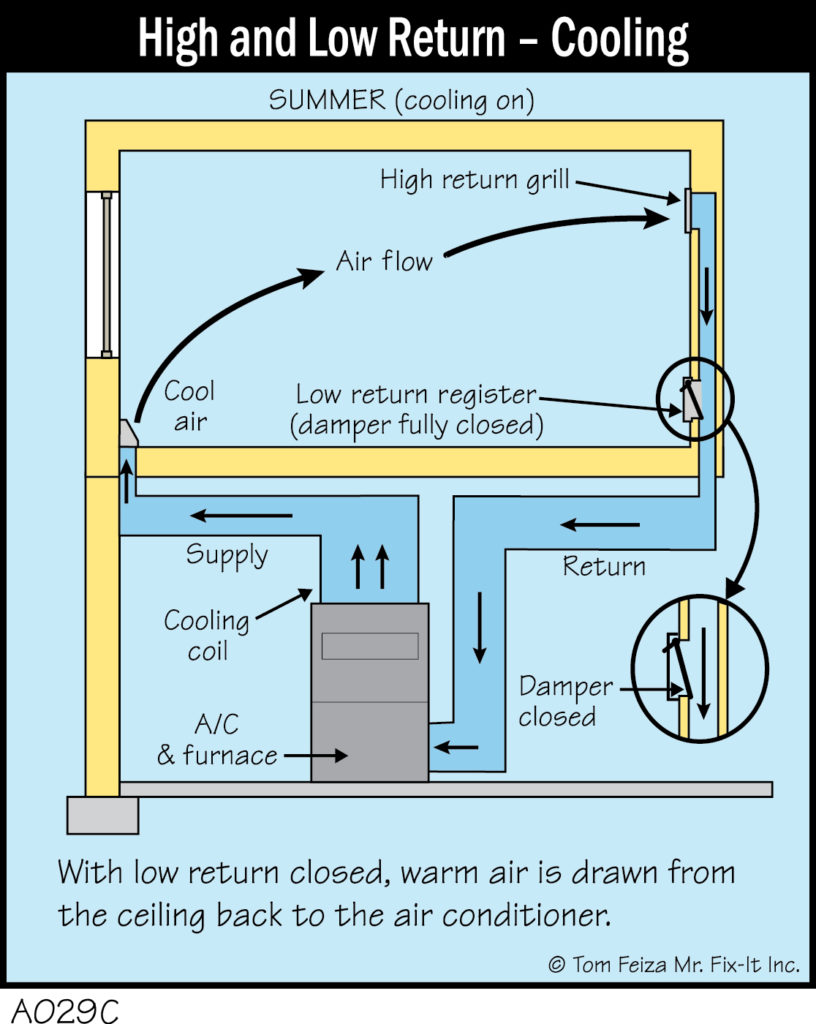
For these homes, we should look at three basic issues: hot air rises; attics can heat the upper level (sun load); and the system might not be balanced. The upper level may be warmer because of poor design, fan control issues, or imbalanced air flow. Many of these systems can be balanced/repaired to operate correctly with changes to the ductwork and fans.
Hot upper level in a pre-1950 home
Prior to 1950, most forced air heating systems were designed for heating only (Illustration A040C). The upper level was warmed by hot air rising, a warm attic, and a little squirt of heat from the central system. Adding air conditioning to these old systems creates problems. This setup will never properly cool the upper level.
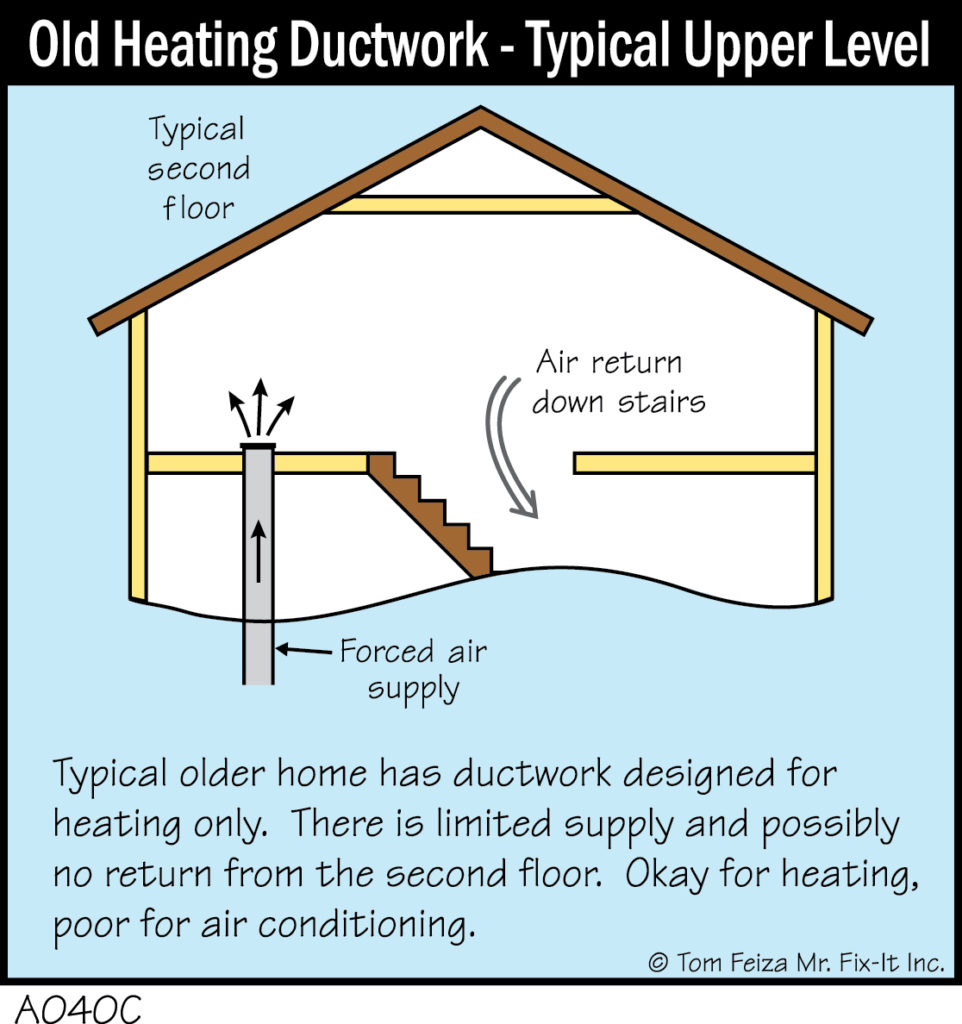
Hot upper level in a pre-1920 home
In early central heating systems, ductwork enabled air flow without a fan (Illustration H089). The furnace and supply duct were placed in the center of the home because hot air rose naturally. Returns were placed near windows to capture cold air, which dropped through ducts near the outer wall.
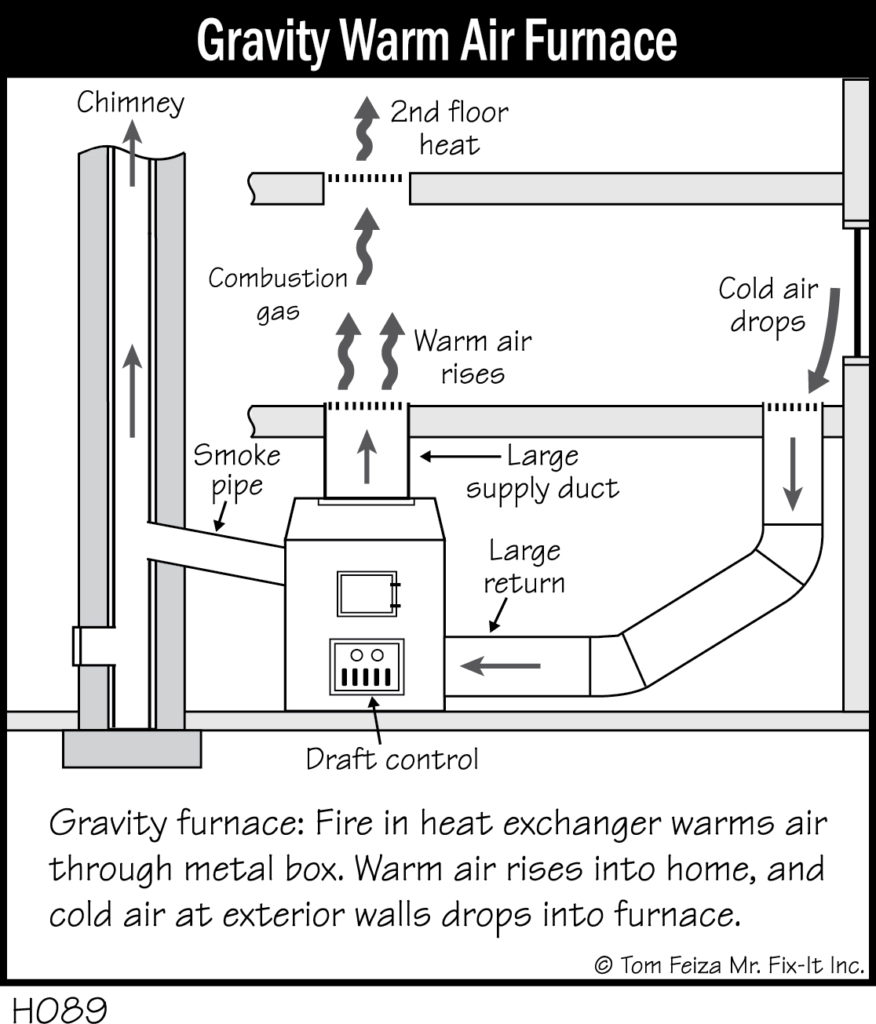
The warming ’20s
About 1920 (Illustration H090), improved design provided more supply and return ducts, but the system still relied on air flow with no fan. Although fans were later added to these systems, it took many more years for the ductwork design and installation to be changed accordingly. (Yes, even way back then, contractors were saying, “We-’ve always done it this way.”)
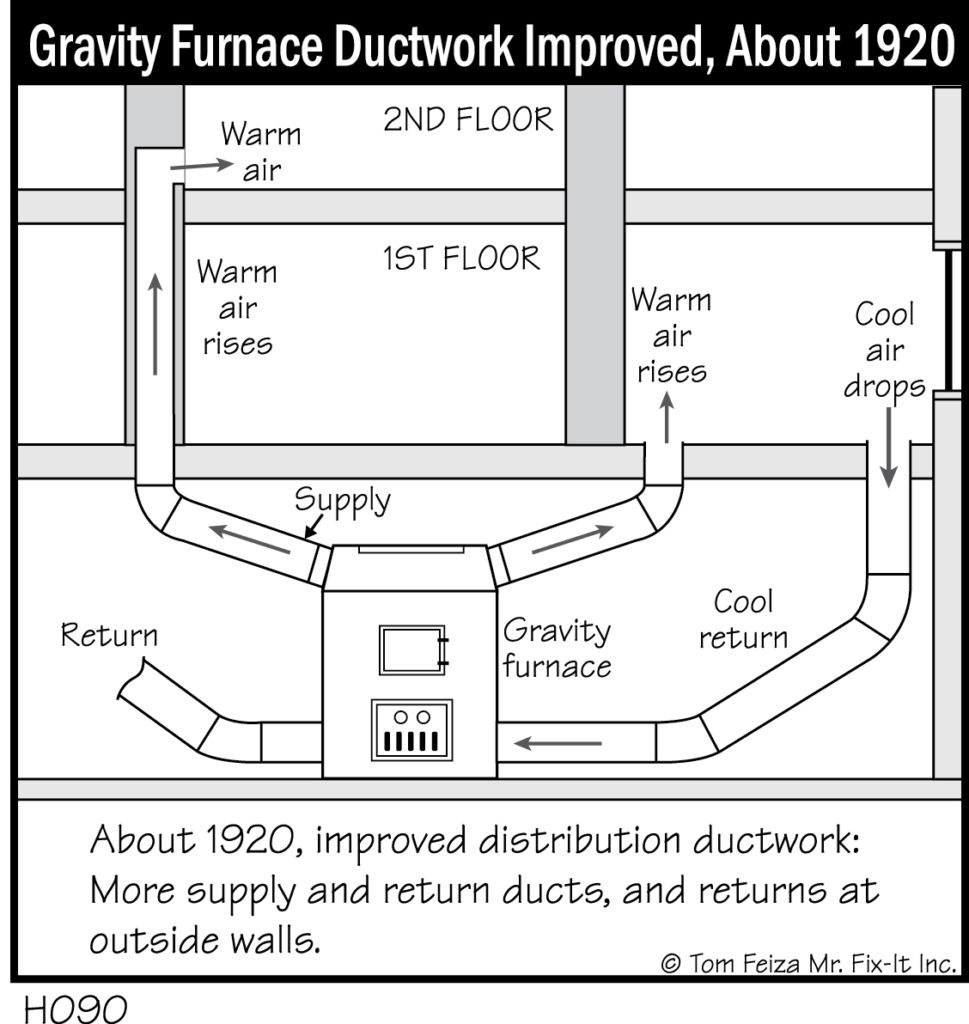
Adding air conditioning is a major project
When we add central air conditioning to old systems, we need to modify ductwork, add ductwork, increase duct size, change the fan – in short, we must design a balanced system. This is rarely done correctly, and the upper levels of these homes will never be cooled properly.
The takeaway
You must understand the changes made over time in forced air heating systems and duct design. If you inspect an old home with no upper air returns, small ducts, limited supply ducts and poor duct design, you should tell your customers there may be an issue with the air conditioning that should be evaluated further.
Tom Feiza has been a professional home inspector since 1992 and has a degree in engineering. Through HowToOperateYourHome.com (htoyh.com), he provides high-quality books and marketing materials that help professional home inspectors educate their customers. Copyright © 2021 by Tom Feiza, Mr. Fix-It, Inc. Reproduced with permission.
